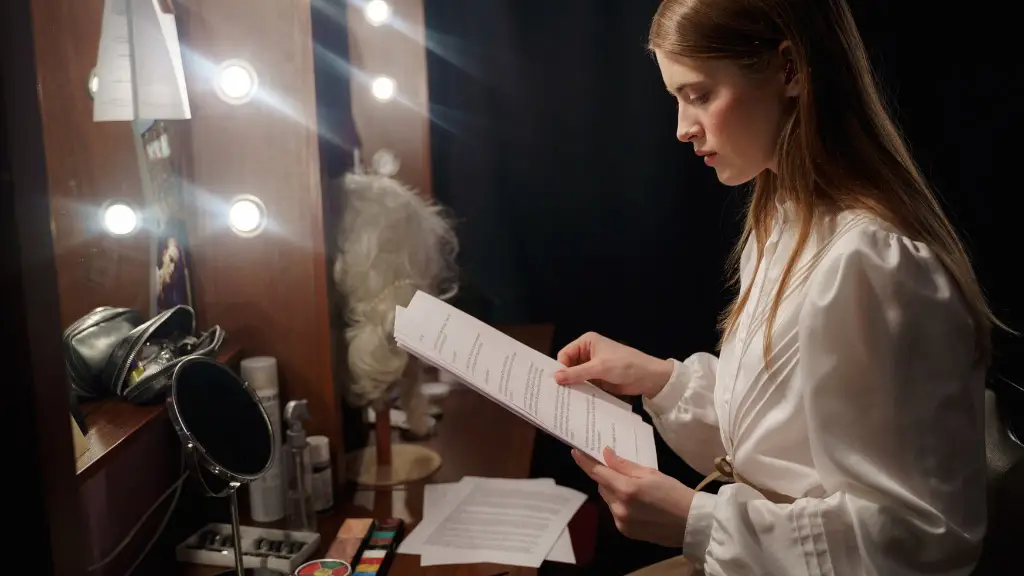In the world of acting, one approach that has gained significant attention is the type of performance that requires you to experience the life of the character you’re playing. This method acting technique moves beyond simple imitation, asking you to dive deep into the character’s emotions, thoughts, and experiences to deliver a compelling and authentic portrayal.
As you explore this fascinating aspect of acting, you’ll discover that it can lead to a more immersive and transformative experience for yourself and the audience. With practice and persistence, you’ll master the art of fully embodying your character, elevating your performance’s impact.
Embracing method acting requires dedication and passion, as it challenges you to break through your own boundaries and delve into unfamiliar emotional territories. By doing so, you’ll not only enhance your acting skills but also cultivate a deeper understanding of the human experience itself.
A Brief History of Method Acting
As an enthusiast for method acting, you are undoubtedly aware of its impact on the acting world. So let’s dive right into the history of this effective technique.
Origins and Development of Method Acting
Let’s start with the origins. Method acting has its roots in the theories of Constantin Stanislavski, a Russian theater practitioner whose system aimed to help actors achieve a deeper connection with their characters. By tapping into their own personal experiences and emotions, actors could deliver more believable and relatable performances.
Later, Lee Strasberg further developed and popularized this approach in the United States with his work in the Group Theatre and the Actors Studio. Strasberg’s adaptation of the Stanislavski System ultimately became known as Method Acting, or The Method.
Influential Actors and Teachers
The development of method acting wouldn’t be complete without mentioning some of the influential actors and teachers who honed and mastered this craft. Two notable examples include Stella Adler and Sanford Meisner, both with Strasberg in the Actors Studio as co-founders and teachers. Adler introduced the concept of using imagination over personal experiences, while Meisner emphasized the importance of reacting truthfully to the moment.
Over the years, method acting has produced a roster of incredible actors known for their commitment to their roles. Notable examples are Marlon Brando, Robert De Niro, and Meryl Streep. These actors have left an indelible mark on the performing arts with their willingness to immerse themselves in their characters fully.
Comparing Popular Acting Techniques
You can adapt various techniques to embody and portray characters effectively in acting. Let’s dive into some renowned approaches and their unique attributes.
The Meisner Technique: The Power of Listening and Reacting
The Meisner Technique emphasizes an actor’s instincts, pushing you to react rather than plan. You become a more authentic and responsive performer by focusing on the present moment. Through repetition exercises, it cultivates your “emotional truth” while working with your fellow actors.
Classical Acting: Honoring Tradition and Text
As an actor, understanding and respecting the foundations of your craft is invaluable. Classical acting techniques, rooted in the works of Shakespeare and other revered playwrights, teach you to honor and deliver the text with clarity and eloquence.

Learning these techniques enriches your potential on stage and allows you to convey sophisticated emotions with refined expressiveness.
Method Acting: Embracing Emotional Realism
Method acting submerges you into the character’s mind and emotions to create a genuine performance. This approach demands self-exploration, emphasizing personal experiences to connect with your role. By “living” as your character, you tap into your emotional reservoir, delivering performances that resonate with audiences.
Evaluating the Pros and Cons of Each Technique
As you examine these techniques, consider which approach best aligns with your style and acting goals.
- Meisner Technique: harnesses emotional truth and responsiveness but requires extensive training and improvisation skills.
- Classical Acting: builds a strong foundation in text analysis and delivery but may feel limiting for some contemporary actors.
- Method Acting: produces emotionally charged performances but may be draining and psychologically challenging.
Choose the technique that resonates with you, acknowledging that mastering more than one can expand your skill set and versatility as a performer.
Notable Examples of Immersive Acting in Film and Theater
Legendary Performances That Exemplify Immersive Acting
You may recall the outstanding performance of Daniel Day-Lewis in There Will Be Blood (2007), where he fully embraced the life of oil tycoon Daniel Plainview.
Another unforgettable display of immersive acting is Heath Ledger’s striking portrayal of The Joker in The Dark Knight (2008).
In theater, you can witness Marlon Brando’s embodiment of Stanley Kowalski in A Streetcar Named Desire (1947) or Philip Seymour Hoffman’s deeply nuanced portrayal of Willy Loman in Death of a Salesman (2012).
How Actors’ Processes Impacted Their Films or Plays
Delving into the immersive method acting process, you may notice how Daniel Day-Lewis stayed in character on and off the set during the production of the critically acclaimed film Lincoln (2012). His commitment to the role translated into an impactful portrayal of President Abraham Lincoln, with every minute detail considered in his performance.
Mark Rylance’s transformative approach to each of his characters, such as his compelling performance in Jerusalem (2011), leaves the audience enthralled. His dedication to his roles establishes a seamless continuity between on-stage and off-stage moments.
How Does the Method Stack Up Against Other Well-Known Acting Techniques?
The method demands a deep, emotional investment in the character, which might lead to intensely compelling performances. Comparatively, other well-known techniques, such as Meisner or Stanislavski, emphasize different aspects of acting:
- Meisner Technique: Focuses on moment-to-moment spontaneity; this method prompts you to respond candidly to stimuli while staying in character.
- Stanislavski’s system emphasizes motivation and objective-based actions rooted in psychological realism. This system combines both internal and external elements to create a complete performance.
Each technique offers unique advantages, and you can incorporate aspects from any method to enhance your individual approach to storytelling.
Practical Tips to Experience Your Character’s Life
Immersive acting requires a deep connection with the character you’re portraying, allowing you to experience their life on stage or screen. This section provides valuable tips and techniques to help you achieve an impressive and authentic performance.
Step-by-Step Guide to Adopting Immersive Acting Techniques
Before diving into a character, research and analyze their backstory, desires, and motivations.
Create a character journal where you can jot down your findings and personal reflections, helping you solidify your connection with the role.

Next, explore relaxation and visualization exercises to develop your immersion further and embrace your character’s emotions.
Enhancing Your Acting Skills Through Immersive Character Exploration
Utilizing improv exercises helps to deepen your understanding of the character and improve your ability to react naturally in unpredictable situations.
Additionally, consider exploring physicalization, adjusting your body and movement to represent the character’s physical traits and mannerisms accurately.
Lastly, engage in group or partner scenes wherein you converse and interact as your character, allowing you to practice your immersion skills in a dynamic setting.
Conclusion
We’ve delved into the importance of experiencing a character’s life as an essential aspect of an actor’s performance. By immersing yourself in the character’s thoughts, emotions, and background, you can achieve more authentic and powerful performances, captivating your audience and making a lasting impact.
Here are some key points for aspiring actors to continue honing their craft:
- Authenticity: Fully understanding and experiencing your character’s life helps you portray them more realistically, bringing their story to life on stage or screen.
- Emotional Connection: By empathizing with your character’s journey, you’re better equipped to captivate your audience and create meaningful connections with them.
- Critical Acclaim: Actors who excel in embodying their characters receive accolades and recognition from peers and critics alike, elevating their careers.
Every actor’s journey is unique, and it’s crucial to explore various techniques and methodologies that resonate with you.
From Method Acting to the Stanislavski System, challenge yourself to expand your skill set, experiment with new approaches, and discover what feels most authentic for you when navigating the complex world of acting.
Remember, elevating your craft takes time, dedication, and a deep understanding of your character’s life. Embrace the process, and be proud of your progress as your performances become increasingly nuanced and emotionally rich.
Frequently Asked Questions (FAQs)
What Are Some Common Misconceptions About Method Acting?
One misconception is that method actors are always in character, even off-stage. While some actors stay in character between takes, others only employ the technique during actual performances.
Another myth is that method acting is psychologically harmful when its risks can be mitigated with proper training and self-awareness.
How Can I Tell Which Acting Technique Is Best for Me?
Consider your personal learning style and comfort level. If you’re more comfortable internalizing emotions and exploring a character’s psyche, method acting may be a good fit. Alternatively, a different approach might be better if you prefer external techniques like physicality and voice work.
Experimenting with various methods during workshops or classes can help you choose the best technique for your needs.
Can I Combine Different Acting Techniques to Create My Own Approach?
Absolutely, many actors find success by blending elements from various techniques. You might borrow Stanislavski’s emotional memory exercises from method acting and combine them with Meisner’s moment-to-moment focus. Remain open to new ideas and experiences, and be willing to adapt and grow as an actor.
How Long Does It Typically Take to Master Immersive Acting Techniques?
Mastering any acting technique takes time, dedication, and consistent practice. Method acting, in particular, can require years of training and experience to be fully understood and implemented.
Keep in mind, though, that even accomplished actors continue to refine and develop their skills throughout their careers.








